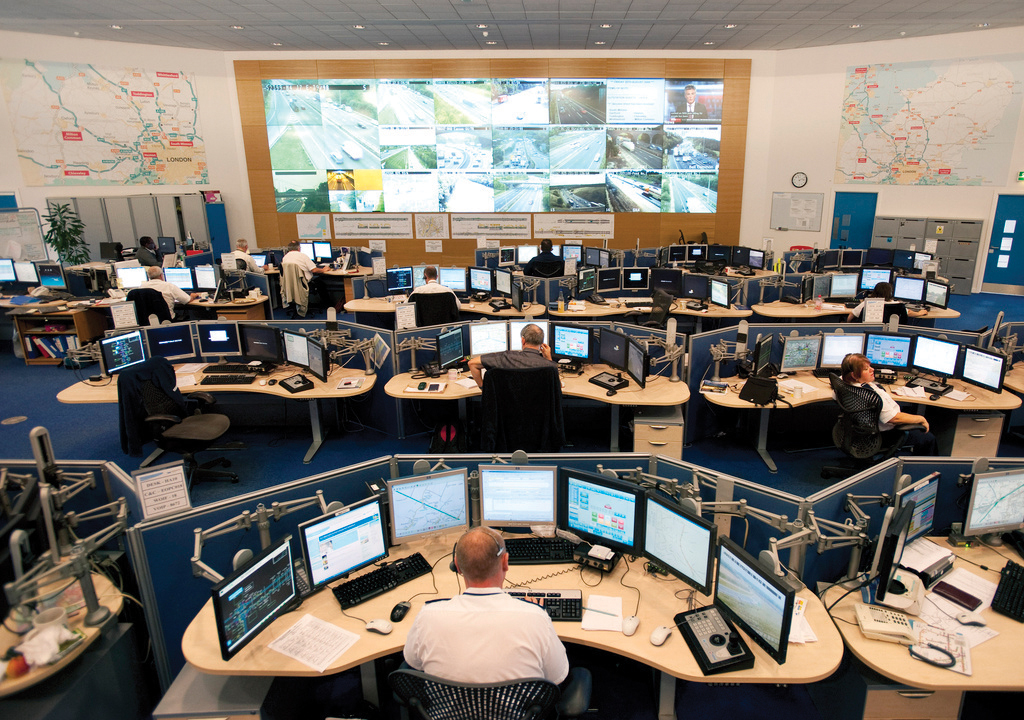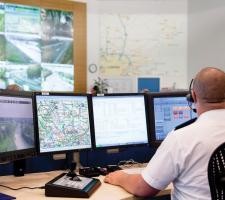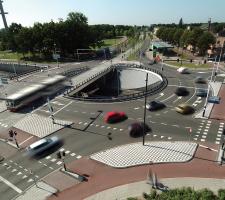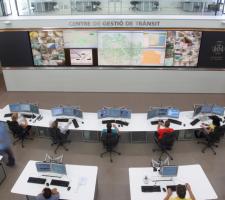
The Rijkswaterstaat and Highways Agency have joined forces to investigate what the market can do to realise an idealistic vision for traffic control centre technology. Jon Masters reports
One particular seminar session of the
The subject was the CHARM project – an initiative established by The Netherlands’
The subject is intriguing from the outset. Closer inspection shows opportunity is being presented for industry to influence what the HA and RWS do next.
To begin with, the CHARM project partnership has launched a market consultation. The HA/RWS team has invited industry to respond to an initial questionnaire designed to indicate the market’s capabilities and to allow suppliers to give feedback on the project’s ambitions and planned approach. Deadline for submissions was 1 May. The results or ‘insights’ from this initial consultation are due to be published in June. A more detailed or targeted second round will then commence and run until October, with communication of its insights expected in December.
Question One of the initial questionnaire asks respondents to rate the feasibility of the stated objectives. The main aim is to put the HA and RWS on a procurement path that allows their control centres to be gradually or incrementally upgraded at lowest possible long-term cost.
Increasing competition is seen as important for lowering costs, so CHARM has stated objectives of creating central systems that are open to integration with other technology and can be adapted to accommodate additional equipment or upgrades without any irreversible ties or ‘lock-in’ to proprietary hardware or software.New control systems are to be sought that can be easily configured by operators from ergonomic interfaces and there is a desire for a seamless migration to this overall utopia.
The market has responded in kind. ITS International has spoken to a number of the HA’s and RWS’ suppliers – ITS consultants, system developers and integrators. Overall, the initial response is positive, commending the initiative, albeit with a wry nod to a trend of client organisations kicking off major developments by seeking free consultation.
The CHARM team is seeking a variety of views, comments and input, but a common comment is likely to be: yes it’s all possible, but the HA and RWS need to explain in a lot more detail where they want to get to in terms of system requirements.
This last element will come later. “We’re looking to give a full and viable response and suggest business models of how it can be provided as a service, but more information is needed for us to do this,” one leading consultant says. “Only after the second stage, when the initiative reaches one-on-one interviews will the discussions really start in earnest.”
Others welcome the fact that a vision has been described, even if it is ambitious. A way of getting there can be imagined. Given that neither the HA nor the RWS are going to be shutting any of their systems down and starting again – the first regional control centre to be ‘replaced’ is expected to be the Geldrop TMC in the Netherlands – transition will be all-important.
A series of sophisticated software adapters may become the answer to making new and old work together, to allow a seamless migration. “It is likely to be those that come up with the best transition strategies that are ultimately most closely involved,” says another consultant.
One commentator says it is only natural for the HA and RWS to want to move away from a situation described by CHARM as ‘a collection of hardly integrated legacy systems, with technology highly fragmented and prone to vendor lock-in and high cost’.
Large companies that have developed businesses on supplying bespoke technology may not like the sound of open standard systems, he says. But one major European vendor replied to that by saying moves towards interoperability would be welcomed, if further countries’ highway authorities joined suit to help create a more sizeable market. Service type business models, with less exhaustive and costly procurement, are better for all if there’s enough to go round.
Also suggested strongly is a widening of the consultation, to the United States in particular where a lot of experience and expertise in systems migration has developed, with standards such as NTCIP for centre to field communications. Others point out that the HA does not need to look far for standards already in place. HA teams have already done considerable work on projects established (and since shelved due to funding cuts) to integrate national and local ITS systems.
“The UK’s
Turning policy to traffic priority
ImFlow, a new adaptive traffic control system developed by
ImFlow is being promoted as a highly scalable system, suitable for single intersections, corridors or city networks. It works by assigning a level of importance to each policy within the parameters of traffic scenarios, allowing users to balance the importance of different routes, vehicles, pedestrians and cyclists within road networks. The system supports multi-criteria optimisation at area, route and intersection levels, so allowing policies to be defined for each level. Traffic engineers interact with the software to set and adjust policy priorities accordingly. An interface to micro simulation modelling software is included within the system to allow different settings and scenarios to be tested.
A pilot scheme testing the effectiveness of ImFlow has been under way in Helmond in The Netherlands since September 2011.
Results of simulation testing show that in comparison to the existing traffic management system in Helmond, ImFlow has improved traffic delays in the evening rush hour by zero in one (west-east) direction of the test intersection and 50% in the other (east-west). According to Peek’s UTC product manager Andrew Hodge, this result comes from the existing TMC being able to ‘find’ suitable timings, but in only one direction at a time. ImFlow calculates optimum timings for both directions simultaneously.
The Helmond trial includes cooperative vehicle connections providing priority to selected vehicles and adjusting traffic signals accordingly. However, ImFlow does not necessarily need to use cooperative vehicle technology – the system can also use conventional traffic and vehicle monitoring equipment – but in the development of UTC systems, ImFlow is a significant further step towards fully cooperative systems. Peek launched the first commercially available platform for cooperative ITS in December 2011.
Change for the better – Valencia’s video wall upgrade
Versatility and ease of use are among key benefits claimed by Valencia’s traffic management centre (TMC) following installation of a video wall made up of 10
According to the head of Valencia’s TMC Juan Casan Moret, the relocation of the TMC gave an ideal opportunity to upgrade to a modern video wall overcoming the previous problems and providing the means to display images from a diverse range of sources. Valencia’s TMC operators have a single display unit for showing images from 753 CCTV cameras, plus traffic management software, TV, Internet and text documents.
“On top of that, the video wall had to offer crisp images and right colours and be easy to maintain. Visits to peer TMCs and an extensive feasibility study convinced us that Barco could meet all of these requirements,” Casan says. Systems integrator Gesab designed and installed the new TMC audiovisual equipment. This included the video wall of 10 OL-721 projection modules in a 5x2 arrangement, with adjoining Apollo wall management software.
According to Barco, the wall’s liquid cooled heat management system can lower the temperature of the LED light sources by 10 degrees. This solves the problem of excessive heat dissipation and effectively doubles the expected life span of the LEDs, lowering maintenance costs.
However, the main benefits are considered to be the versatility and ease of use of the new wall. Casan says: “Our way of working has really changed for the better. Operators can put up images from the most diverse sources, from a particular CCTV camera, for example, all in one wall layout.” Each team of the Valencia TMC configures the wall to suit their own needs. Weekend shifts have special scenarios for monitoring and managing traffic when a big soccer game is being played. Another special scenario is in place for days with heavy rainfall.
“The application programming interface from the Apollo software helps us customise the content of the wall more quickly and easily,” Casan adds. “This way we can get more return on our initial investment.”














